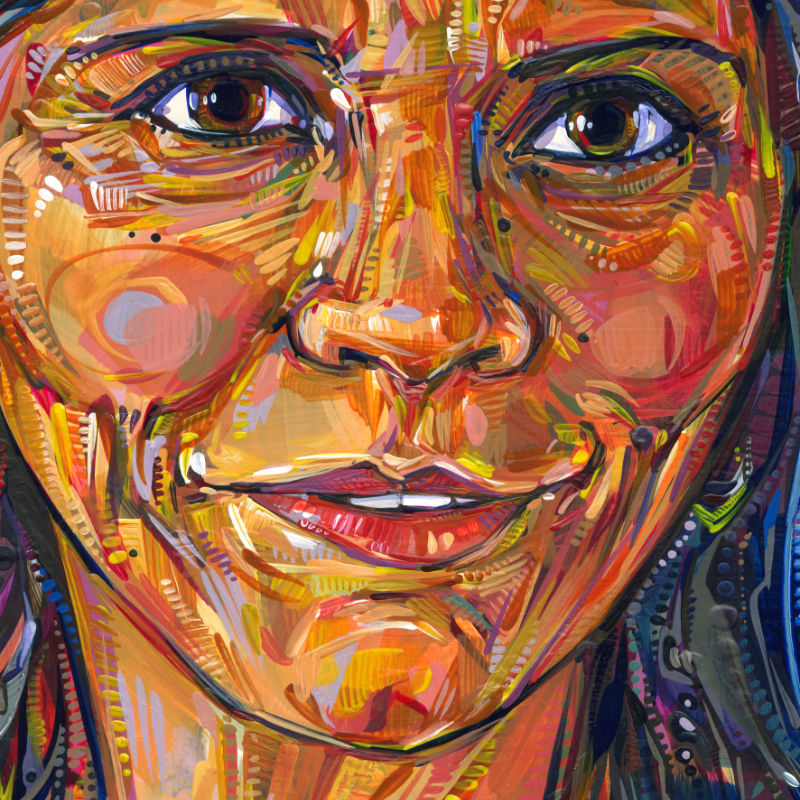Blog / 2020 / How to Love Your Art #6: Decide on What’s Right and Wrong in Your Art
March 2, 2020
People like to say that there are no wrong answers in art. It’s why students view art as the throw-away class—the easy A for someone who’s looking to improve their GPA. But, contrary to popular belief, there are rules in art. The difference is that, when it comes to creativity, you get to pick the ones you care about.
If you want to feel good about your art, you need to find a structure for it.
This is a large part of why hyperrealism is so popular, among both artists and art lovers. Because it aims to reproduce photography and because we are so used to seeing photos, everyone knows when a hyperrealistic work is right and when it’s not. In a world where anything can be art as long as the artist says so, the obvious skill of a photographic painting can be reassuring.
Hyperrealism is an example of a style rule, and it’s hardly the only one. Every movement and genre has its own checklist of things you must do in order to have your work belong to that category, though most of these categories are not very rigidly defined. For example, many of Monet’s water lily paintings famously fit in with both impressionism and abstraction.
Furthermore, there are plenty of other kinds of rules. Compositional rules like the golden ratio or the rule of thirds tend to inspire passionate devotion among artists who study them. Technique rules are often based in the science of a particular medium, like the physics behind a cantilevered sculpture or the chemical properties of different paint pigments.
Meanwhile, content rules are usually dictated by context. For example, my art that teaches about the queerness of the natural world found a happy home among the progressive nonconformists of Portland, but has been roundly rejected by the Christian fundamentalists of south Jersey.
All rules can be followed or broken. Your version of “right” could be to always do things the “wrong” way, breaking the generally accepted rules on purpose. It doesn’t matter, so long as you give yourself a structure.
It’s like with kids. When they know what’s expected of them in a given situation—and when what’s expected doesn’t conflict with their core values—they tend to thrive. People love having a basic structure for their behavior because it allows them to participate fully. Similarly, artists do well when they have rules for their art. Right and wrong simplifies creative decisions, making space for exploration.
Early on, portraiture provided my structure. For the first eight years of my career, I painted nothing but the very specific faces of my subjects. Knowing that I had to keep working until I had captured the likeness was essential to my development. It helped me to find my style and to build my confidence in my work, and it still makes me a better painter today, as the video above shows. Sometimes, I just need to make two portraits in order to get one right one!

Sarita
2019
acrylic on panel
14 x 11 inches
This painting is part of a series that will be featured in an upcoming book, but I also paint portraits for private individuals. Find out more about hiring me here.

For more about how to love your art, check out these posts:
- Figure out what art you find boring.
- Learn to appreciate other artists’ work.
- Talk about your art.
- Determine what parts of it make you happy.
- Figure out what worries you most.
- Play with your self-expression versus communication ratio.
- Document your work.
- Inventory your pieces.
- Give your art away.
- Charge a lot of money for your work.
- Take a break from your art now and again.
- Don’t claim the copyright on your work.
- Don’t let jerks near it.
- Introduce your art to all your favorite people.
- Celebrate your work.
- Define the word “love.”
Did this post make you think of something you want to share with me? I’d love to hear from you!
To receive an email every time I publish a new article or video, sign up for my special mailing list.

